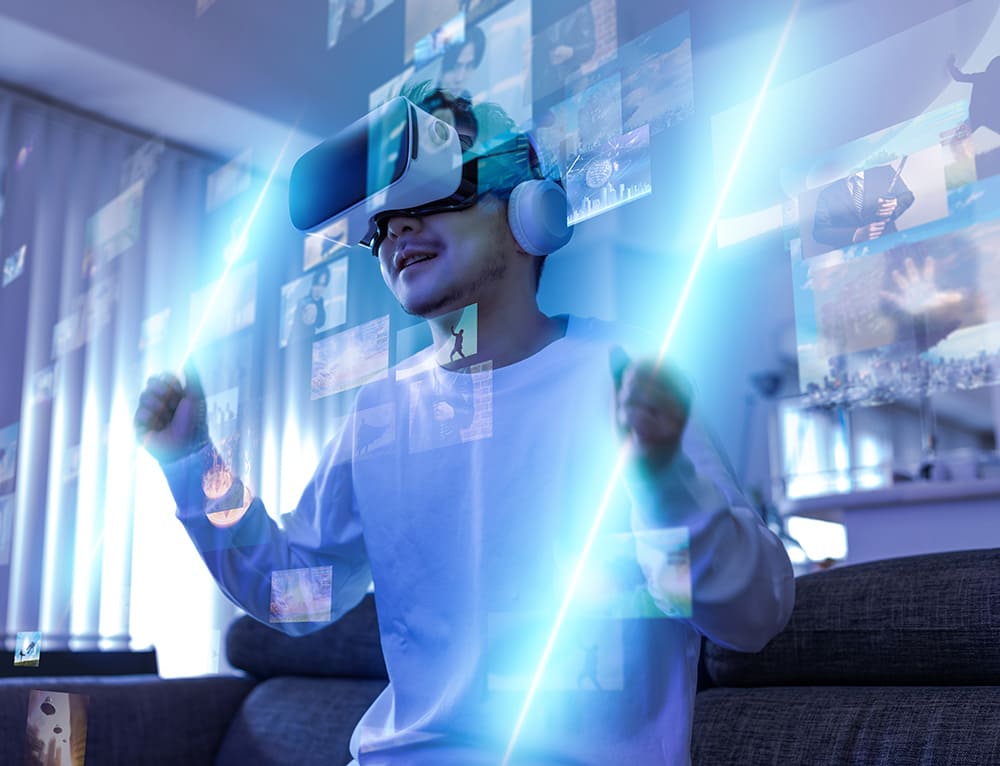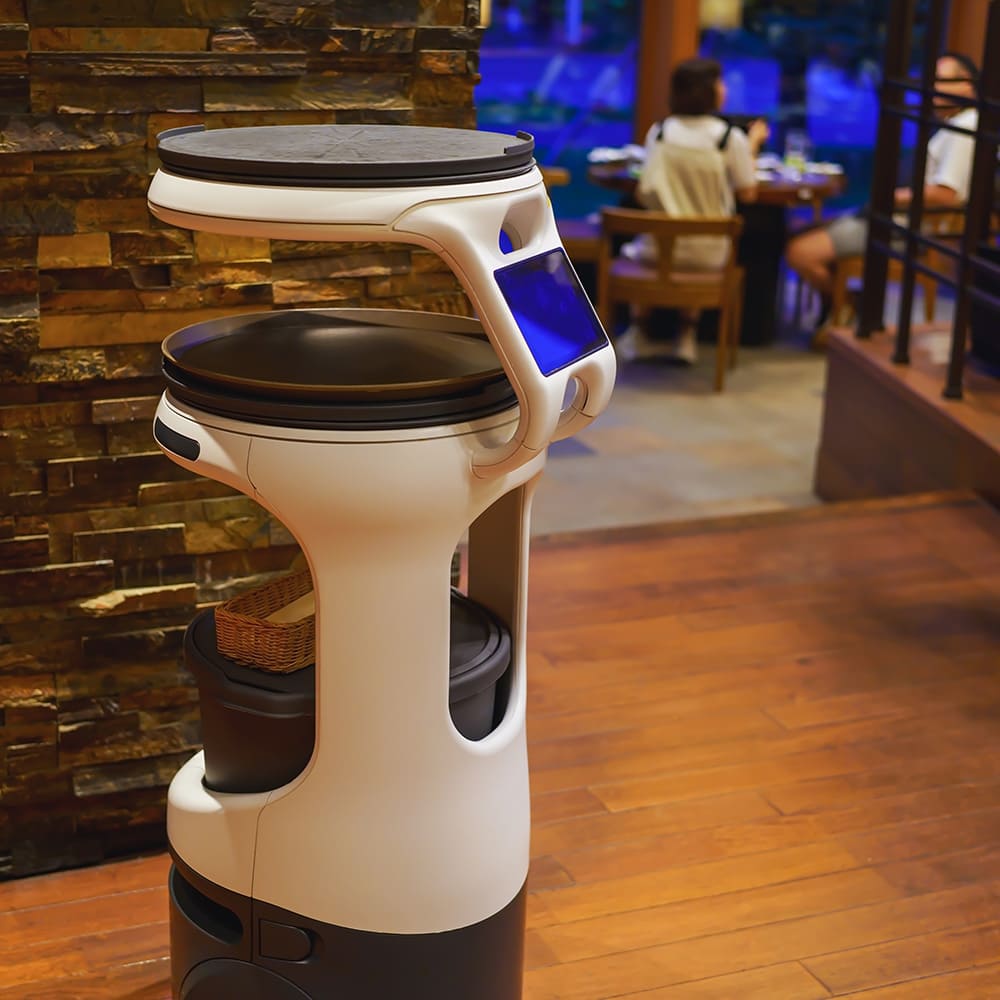The Beyond 5G Society Being Pursued by Research and Development
Entertainment, Leisure, and Restaurant Industries
Expanding the entertainment, leisure, and restaurant industries with Beyond 5G
An increasing number of people are enjoying various forms of entertainment and leisure activities in virtual spaces instead of the real world. Although these activities have mainly been centered around watching videos, listening to music, and playing games, they are expected to expand to sports, travel, and leisure facilities in the future. Entertainment in virtual spaces has been gaining attention in recent years, and the ultra-high-speed, large-capacity communications and ultra-low latency realized by Beyond 5G are expected to further accelerate changes in these industries.
In addition, the restaurant (dining out) industry has been working to improve efficiency by introducing robots and using ICT, and Beyond 5G is expected to contribute even further to providing new services and improving management.


Future Vision
The entertainment and leisure industries are expected to see unprecedented breakthroughs thanks to innovative advances in device and communication technologies. The following factors are expected to have a particularly significant impact.
(1) Providing the ultimate immersive experiences
Ultra-high-speed, large-capacity communications will enable the transmission of extremely high-quality sound and images. In addition, highly realistic communication technologies that stimulate the senses more than ever before will bring about unprecedented immersive experiences and a sense of unity.
(2) Integrated virtual and real worlds
Seamlessly integrating virtual and real worlds, such as reflecting the real world in virtual spaces or superimposing virtual spaces onto real spaces, will enable the provision of new experiential value.
(3) Integrated entertainment and social media
It will be possible to use virtual spaces to provide spaces where users can, for example, participate in games and live events with friends or communicate with other users.
(4) Support for content creators
As devices and AI evolve further through the communication infrastructure enabled by Beyond 5G, anyone will be able to create high-quality content, and this trend is expected to accelerate.
(5) Borderless service provision
It is expected that many more people will be able to access high-quality entertainment services anytime, anywhere, and at low cost.
Meanwhile, in the restaurant industry, the use of cutting-edge technologies such as robots, IoT, and AI is expected to improve operational efficiency. Advances in technologies such as cooking robots that can handle various orders and serving robots that deliver dishes using autonomous driving are expected.


Future challenges
In the entertainment and leisure industries, there is a demand for high-quality data communication and technologies that convert real people and places into three-dimensional digital data and reproduce them in high quality to transmit spatial information with ultra-high-quality sound and images. A large amount of sensor data must be collected and reflected in real time in order to integrate virtual and real spaces. In addition, the realization of multimodal real-time communication requires integrating not only base station-to-terminal communications but also short-range communications such as high-reliability, low-latency direct communication between terminals.
In the restaurant industry, there is a demand for ultra-high-speed, high-capacity, and ultra-low-latency communication infrastructure that enables real-time confirmation and control of large amounts of image and location information from serving and cooking robots. In particular, the realization of unmanned restaurants using robots requires ultra-high-speed, high-capacity, ultra-low-latency communication and ultra-low power consumption to enable robot operation for long hours.
(Reference)
- “Beyond 5G White Paper ~Message to the 2030s~ (version 4.0) ” published by the XG Mobile Promotion Forum.

